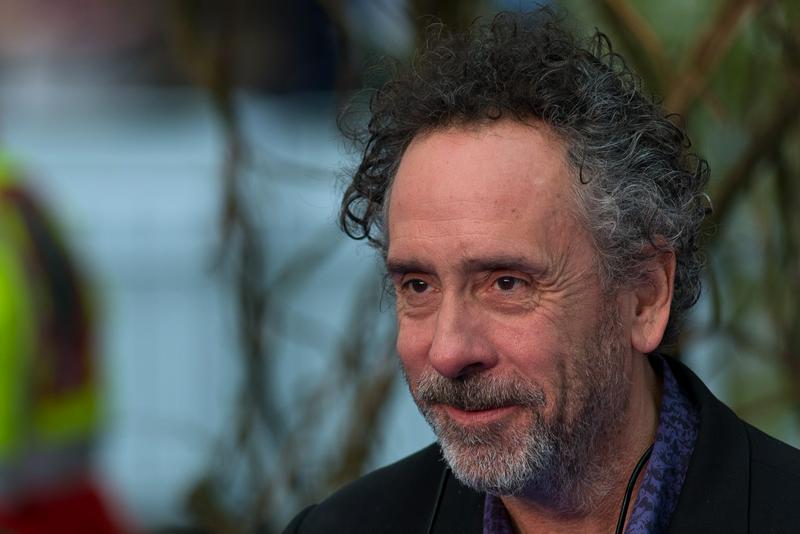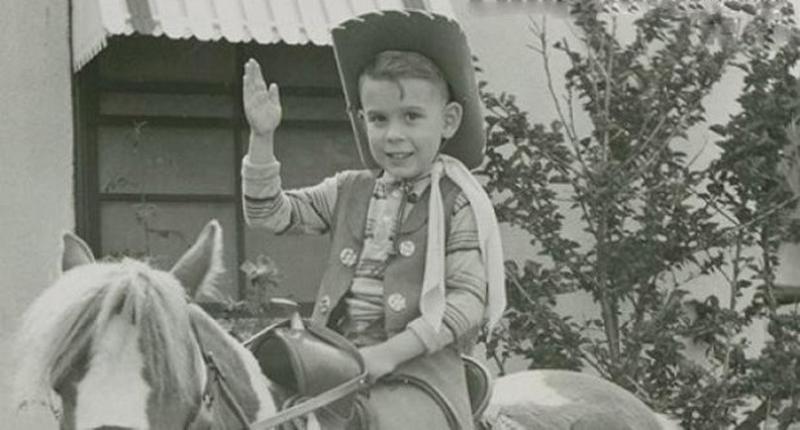Tim Burton's Childhood Fascination with Fantasy & Horror
By | May 25, 2018

There are few directors more easily recognized for their fascination with horror and fantasy than Tim Burton. The well-known producer, screenwriter, and illustrator has been hired and fired by Disney three times; not usually an event someone wishes to make known to the public. While his short stints at Disney gave him valuable training and education with animation and production, it was his pivot from the family-friendly fairy tale company that allowed him to explore what was truly important to him.

Tim Burton was born in the average town of Burbank, CA in 1958. He grew up with both of his parents and his brother in this typical suburban borough. Not being fond of his life in this neighborhood, he found solace in a cemetery at the end of his street, Valhalla Memorial Park Cemetery.
“It didn’t quite feel morbid, although people probably think it is,” he says. “It felt more exciting and lonely and special and emotional. I guess it was a good place to think.”
While attending school other kids found him odd, and he was most likely bullied due to his introverted and shy nature. He found himself relating to characters of some of the most classic horror movies, like Frankenstein (1931).
"He's perceived as a monster, even though he isn't really. He's just different."

Being an average student at Burbank High School, Burton had little interest in school work but instead was drawn to painting, sketching and watching films. He began creating films as a young teen and wrote and produced his first short film, The Island of Doctor Agnor, using stop-motion techniques. At the age of 14 one of his sketches won first prize for an anti-litter campaign hosted by a local waste management company.
Burton didn’t have a lot of friends but looking back, he thinks that was quite normal for the junior high and high school years. Although he didn’t believe it at first, people in his sphere of influence often told him he was “not normal”.
“I always felt like I was a fairly normal person, but at a certain age, I thought, ‘Maybe I’m not because everyone’s saying I’m not.'”

He remembers one high school teacher in particular, Doris Adams, encouraging him in his imaginative pursuits, allowing him to express himself and to feel like a “normal” teenager in her class.
“She nurtured you but also kind of said you were okay, at that time when people who did art were deemed as weird.”
She had a camera in her classroom and gave Burton lessons in stop-motion animation.
During an interview she recalled him drawing constantly - pictures of ghastly creatures and mysterious figures. She noted that not many people would have that type of detailed and meticulous imagination.
“Oh, I have vivid, vivid remembrances of him,” Adams says. “He was very quiet, but he drew the most wonderful, fanciful figures you could ever imagine. Instead of getting in trouble, he would just take his pen and be lost in his drawings.”

Once he graduated from high school, Burton majored in animation at the California Institute of Art, and then worked for Disney for about a year, until he decided to strike out on his own. During his twenties he created and produced his first three major motion pictures - Pee Wee's Big Adventure (1985), Beetlejuice (1988) and Batman (1989).
In the years to follow, he would have written, produced, and directed some of the most memorable movies of the modern time such as Edward Scissorhands (1990), Nightmare Before Christmas (1993), James and the Giant Peach (1996), Big Fish (2003), Charlie and the Chocolate Factory (2005), The Corpse Bride (2005), Alice in Wonderland (2010), and Frankenweenie (2012).

One of his childhood Halloween costumes has a strong resemblance to the main character of Nightmare Before Christmas, Jack Skellington. His mother created a skeleton costume and used a snowman decoration for the bobbling head.

Throughout his movie, Big Fish, he expressed the years surrounding his strained relationship with his parents:
“It was not something that was easy for me to talk about with anybody. But this script was a great way to present that feeling without having to talk about it.”
The ever popular movie Frankenweenie, was inspired by the endearing friendship with his dog, Pepe.
“He ended up living quite long,” Burton says. “It just had a good spirit, that dog. The Frankenweenie character wasn’t meant to look like him. It was more just the memory and the spirit of him.”

One thing Burton is certain of - given the chance he would not change a thing about his past.
“I felt quite miserable in a lot of ways and depressed. But no, I wouldn’t [change that], because it’s something that makes you who you are. I don’t think I would change anything, really, even though if you asked me back then I would have changed every single thing.”

